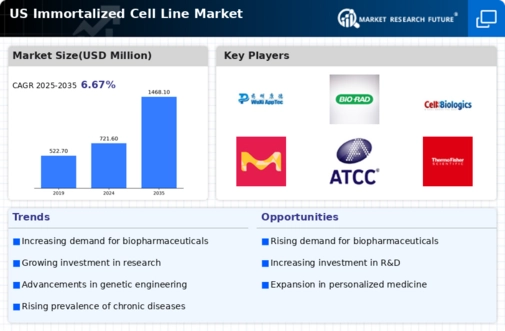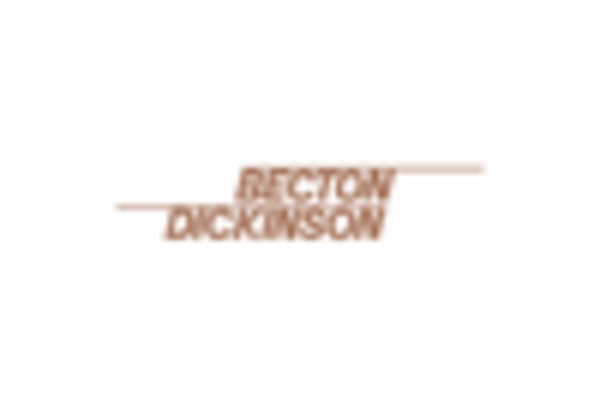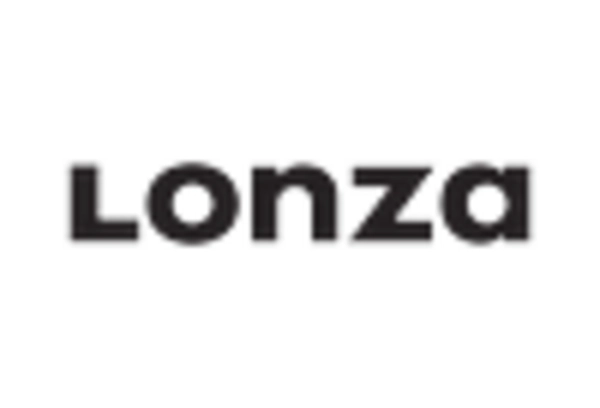Expansion of Academic Research
The expansion of academic research programs in the US is contributing to the growth of the immortalized cell-line market. Universities and research institutions are increasingly focusing on cellular and molecular biology, which necessitates the use of immortalized cell lines for experimentation. As of 2025, funding for academic research is projected to increase by approximately 5% annually, leading to a greater demand for high-quality cell lines. This trend indicates that the immortalized cell-line market will likely benefit from the heightened interest in fundamental research, as these cell lines are integral to advancing scientific knowledge and developing new therapeutic strategies.
Growing Biopharmaceutical Sector
The biopharmaceutical sector in the US is experiencing robust growth, which is likely to drive the demand for the immortalized cell-line market. As of 2025, the biopharmaceutical industry is projected to reach a valuation exceeding $400 billion, with a significant portion of this growth attributed to advancements in biologics and monoclonal antibodies. Immortalized cell lines are essential for the production of these biologics, as they provide a consistent and reliable source of cells for research and development. This increasing reliance on cell lines for drug production and testing is expected to bolster the immortalized cell-line market, as companies seek to enhance their research capabilities and streamline their development processes.
Regulatory Support for Cell-Based Therapies
Regulatory bodies in the US are providing increasing support for the development of cell-based therapies, which may positively impact the immortalized cell-line market. The FDA has established guidelines that facilitate the approval process for cell-based products, encouraging innovation in this field. As the regulatory landscape becomes more favorable, companies are likely to invest more in the development of therapies utilizing immortalized cell lines. This trend suggests a potential increase in market demand, as researchers and developers seek to leverage these cell lines for creating novel treatments and therapies.
Rising Investment in Research and Development
Investment in research and development (R&D) within the life sciences sector is on the rise, which appears to be a key driver for the immortalized cell-line market. In 2025, R&D spending in the US is anticipated to surpass $200 billion, reflecting a growing commitment to innovation in drug discovery and therapeutic development. This influx of funding is likely to enhance the capabilities of research institutions and pharmaceutical companies, leading to an increased demand for immortalized cell lines. These cell lines are crucial for various applications, including toxicity testing and efficacy studies, thereby supporting the overall growth of the immortalized cell-line market.
Technological Innovations in Cell Line Development
Technological innovations in the development and maintenance of immortalized cell lines are expected to drive market growth. Advances in gene editing technologies, such as CRISPR, are enabling researchers to create more precise and tailored cell lines for specific applications. As of 2025, the market for gene editing is projected to reach $10 billion, indicating a strong interest in enhancing cell line capabilities. These innovations not only improve the efficiency of cell line development but also expand the range of applications for immortalized cell lines in drug discovery and disease modeling, thereby supporting the overall growth of the immortalized cell-line market.

















Leave a Comment